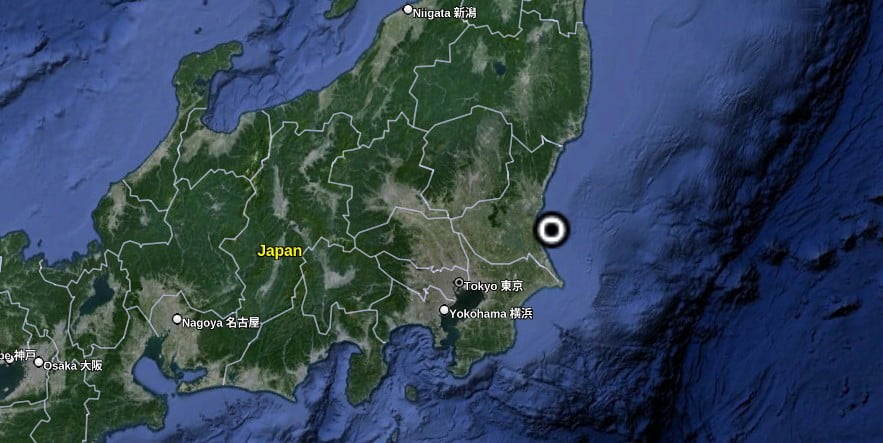Around 150 dolphins stranded northeast of Tokyo, Japan

Around 150 dolphins were found stranded on the Hokota beach in Ibaraki prefecture, about 100 km northeast of Tokyo, Japan on April 10, 2015. Some dolphins, mostly melon-headed whales (also known as electra dolphins) or blackfish were found alive, but were extremely weak.
Rescuers were able to save only three of them before the darkness fell and local officials in Hokota called off the rescue efforts. The rest of the animals had either died or were dying.
ABC news reports:
A journalist at the scene said that despite efforts to get the dolphins into the water, some were being pushed back onto the beach by the tide soon after they had been released.
The pod was stretched out along a roughly 10-kilometre-long stretch of beach in Hokota, Ibaraki, where they had been found by locals early on Friday morning [April 10, 2015].
“We see one or two whales washing ashore a year, but this may be the first time to find over 100 of them on a beach,” a coastguard official said.
A cetacean expert at the National Museum of Nature and Science told NHK television that the dolphins may have had a physiological or psychological problem and faced an unknown threat and panicked, before becoming stranded.
Some 52 dolphins stranded on a nearby coast on March 7, 2011, just 4 days before the massive M9.0 Tohoku earthquake.
DeafWhale explains how submarine earthquakes can cause whales or dolphins to strand:
If a submarine EQ with the right characteristic happens under a pod of diving whales or dolphins, a series of seismic pressure waves generated by the bouncing seafloor will cause the volume of air enclosed in the sinuses and middle-ear air cavities in each animal’s head to suddenly expand and then deflate in tune with the rapidly alternating pressure. These rapid changes in air volume tear the sinus membranes, allowing air to leak where it does not belong and blood to enter the air spaces
In toothed whales, the sinuses and air sacs serve as acoustic mirrors reflecting sound inside their heads in a fashion that allows their echo-navigation system to function properly. Thus, a barotraumatic injury of this sort would naturally disrupts echo-navigation, causing the animals to lose their normally excellent sense of direction. Barotrauma in their cranial air spaces also prevents them from diving and feeding themselves.
Featured image: TW

Predictor of Japan earthquake, maybe.
https://melbrake.wordpress.com/2013/10/15/ancient-serpent-like-fish-predicts-earthquakes-oarfish/
Could it be that FUKUSHIMA RADIATION affected the dolphins.
Radiation from Fukushima (Japan’s nuclear meltdowns) is pouring into the Pacific Ocean every day.
This radiation has reached the California coastline.
This radiation is HOT and detrimental to LIFE and DNA.
IF this is news to you, go to the highly recommended website ENENEWS dot com to learn more.
Very eye-opening!
Any seismic socalled “surveys” close to the areas where the dolphins stranded?
Why…?
Because seismic blastings are the worst disasters to all kinds of life connected to the Oceans. The pressure Waves created by the airguns towed behind seismic vessels scare all creatures able to get away. The many species not able to get away from the pressure dies.
Seismic blastings also close down sustainable fisheries because it’s impossible to catch fish when the fish run away from the fishing banks.